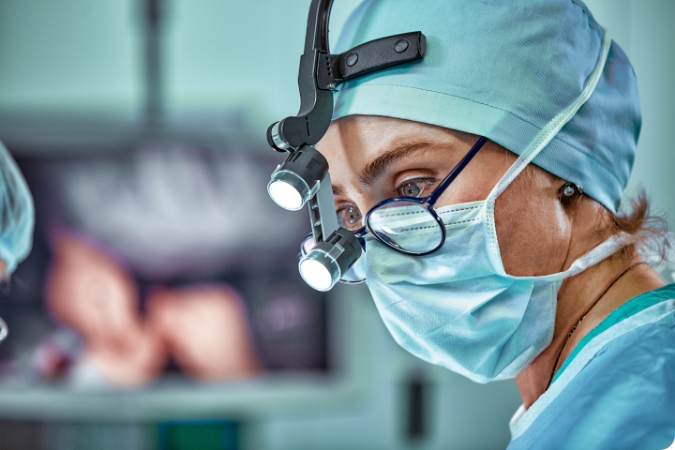Eyelid Disorders
What are eyelid disorders?
The eyelids play a crucial role in protecting the eyes and maintaining overall eye health. When issues arise, they can lead to discomfort, vision problems, or even long-term complications if left untreated.
Eyelid disorders vary widely in severity, from mild irritation to conditions requiring surgical intervention. Timely diagnosis and expert care are essential to restoring function and comfort.
When to seek consultation:
symptoms of eyelid disorders
Recognizing the symptoms of dry eye and consulting a specialist early can prevent further damage.
If you experience any of these symptoms, book a consultation with our specialists for an accurate diagnosis and tailored treatment plan.
Key signs to watch for include:
- Persistent redness, irritation, or swelling
- Eyelid drooping or misalignment
- Excessive tearing or dryness
- Lumps, bumps, or lesions on the eyelid
- Difficulty closing the eye completely

Types of eyelid disorders and their treatments
Entropion
Entropion occurs when the eyelid, typically the lower lid, turns inward, causing the eyelashes to rub against the cornea. This can lead to irritation, redness, tearing, and potential corneal damage if left untreated.
Treatment options for entropion
Lubricating eye drops and ointments
Mild cases can be managed with lubricants to reduce discomfort and protect the cornea.
Surgical correction
Severe cases often require surgery to reposition the eyelid and prevent further complications. Surgical techniques focus on tightening the eyelid and correcting muscle or tissue laxity.
Ectropion
Ectropion is a condition where the eyelid turns outward, leaving the inner eyelid exposed. This increases the risk of dryness, irritation, infection, and excessive tearing.
Treatment options for ectropion
Artificial tears and lubricants
These can help manage dryness and irritation in mild cases.
Surgical treatment
Surgery is recommended for advanced cases to tighten the eyelid and restore its proper position, preventing further complications.
Ptosis
Ptosis refers to the drooping of the upper eyelid, which can range from mild to severe, potentially obstructing vision. Ptosis may be congenital, due to improper muscle development in utero, or acquired, resulting from age-related muscle weakening, trauma, or neurological conditions like myasthenia gravis.
Ptosis symptoms include drooping eyelids that obstruct vision, requiring extra effort to keep them open, often causing eyebrow strain or fatigue. Severe cases may force individuals to tilt their heads back to see better.
Surgical treatments for ptosis
For patients whose ptosis is severe enough to interfere with vision or cause discomfort, surgical correction is often the recommended treatment. The surgery involves tightening or reattaching the muscles responsible for lifting the eyelid. The type of surgery depends on the underlying cause of the ptosis and the degree of muscle function present.
Levator resection:
The levator muscle is shortened or tightened to elevate the eyelid.
Müller’s muscle resection:
A minimally invasive approach is effective in certain cases with good eyelid response to specific eye drops.
Frontalis sling:
In severe cases, this procedure connects the eyelid to the forehead muscle, allowing the patient to lift the eyelid using forehead movements.
Who should perform ptosis surgery?
Oculoplastic surgeons, with specialized training in eyelid and facial surgery, are the most qualified professionals to perform ptosis repair. These highly trained ophthalmologists have completed additional fellowship training in eyelid and facial surgery, equipping them with unique expertise in managing the delicate structures around the eyes. Their combined knowledge of ophthalmology and lid surgery ensures optimal functional and aesthetic outcomes for patients.
Selecting an oculoplastic surgeon is crucial to minimizing the risk of complications such as overcorrection, undercorrection, asymmetry, or eye injury. Given the eyelid’s vital role in protecting the eye and maintaining tear film health, precision and specialized knowledge are essential to avoid long-term vision problems or discomfort.
If ptosis is interfering with daily life, consulting an oculoplastic surgeon can provide a personalized treatment plan and the best opportunity for effective, lasting results.

Tear drainage disorders
Tear drainage disorders, such as nasolacrimal duct obstruction, result in excessive tearing (epiphora) due to a blocked tear drainage system. This can lead to chronic irritation and infections if untreated.
Treatment options for tear drainage disorders
Non-invasive treatments
Massage and warm compresses can help open the tear ducts in mild cases.
Surgical interventions
Procedures like dacryocystorhinostomy (DCR) or the insertion of stents can restore normal tear flow and alleviate symptoms effectively.
Chalazion and stye
A chalazion is a small, usually painless lump that develops on the eyelid due to a blocked oil gland (meibomian gland) in the upper or lower lid. While it may resemble a stye, a chalazion is generally less painful and often occurs further from the edge of the eyelid. A chalazion may become inflamed and can lead to redness, swelling, and, in some cases, temporary vision impairment if it grows large enough to press on the eye.

Treatment options for chalazion and stye
Non-invasive treatments
Most chalazia resolve on their own over time, and approximately 25% to 50% of chalazion cases resolve with conservative treatment.
Warm compresses:
A compress applied to the affected eyelid can help to soften the blocked oil, reduce inflammation, and promote drainage. Regular use of warm compresses is highly effective in the early stages of a chalazion, particularly in smaller lesions.
Topical or oral antibiotics:
In cases where there is secondary infection or associated inflammation, antibiotics or anti-inflammatory eye drops may be prescribed.
Steroid injections:
For larger or persistent chalazia, a steroid injection may be administered directly into the lesion to reduce inflammation and promote faster healing.
Surgical removal
If the chalazion does not resolve with conservative treatments or grows too large, minor surgery may be necessary to drain the lesion. This procedure is typically done under local anesthesia and is effective in relieving symptoms quickly.
Advanced Treatments
Advanced treatments like Intense Pulsed Light (IPL) and Radiofrequency (RF) improve gland function, reduce inflammation, and prevent recurrence in resistant cases.
Intense Pulsed Light (IPL):
IPL therapy works by applying bursts of light to the skin around the eyelids, reducing inflammation and improving meibomian gland function. Interestingly, one study using Lumenis IPL showed that IPL was successful as a treatment for chalazia with the majority resolving with 4 treatment sessions 3 weeks apart, with fewer recurrences compared to surgery. Certain adjuvant IPL treatment can help meibomian glands from blocking and forming chalazia.
Radiofrequency (RF):
RF treatment involves the use of electromagnetic waves to gently heat the tissues around the eyelids. This promotes better circulation and gland function, encouraging the natural drainage of the blocked meibomian glands.
TOP CHOICE FOR SPECIALIZED EYE CARE
Why choose Haute Vision
for eyelid disorder treatment?
Specialized expertise
Our team includes highly skilled oculoplastic surgeons with extensive experience in diagnosing and treating all types of eyelid disorders.
Comprehensive diagnostic tools
We use advanced imaging and diagnostic technologies to accurately assess and address each patient’s unique needs.
Personalized treatment plans
Every patient receives a tailored care plan designed to restore comfort, function, and aesthetics while minimizing risks.
Commitment to long-term care
We provide thorough follow-up care to ensure successful outcomes and address any ongoing concerns, supporting your eye health for years to come.
